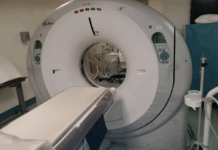When replacing pipes for their combustion and sealing compounds, cold welding is often used. It means a method of fastening materials at room or even negative temperature using special epoxy glue. At the same time, heating with external sources, both adhesive mass and pipes, does not occur. This method of connecting the elements of the water supply was perfectly proved both when working with the pipes of common heating and water supply networks, and when creating individual systems in cottages and country houses. Cold welding has the following advantages:-Operationalness-grasping the glue occurs quickly enough,-compound-the glue tube does not take up much space, when it is used, there is no need to use additional equipment,-the capacity of use in various climatic conditions-setting the composition does not depend on temperature and moisture air,-universality-glue is designed to work in hot and cold water supply systems, can work in pipelines with various working fluids. Has cold welding and its shortcomings. So, the glue dries literally 15-20 seconds, so that the pipes must be connected immediately. Before this, they must be prepared — carefully check the size of the coat -off elements and degrease their surface. The glue is quite demanding on the materials. «Welding» is suitable only for steel galvanized or polypropylene pipes. This connection method is good for the operational creation or repair of water supply systems.
© (c) NewsAsia, 2017-2021. Новости стран Азии.








